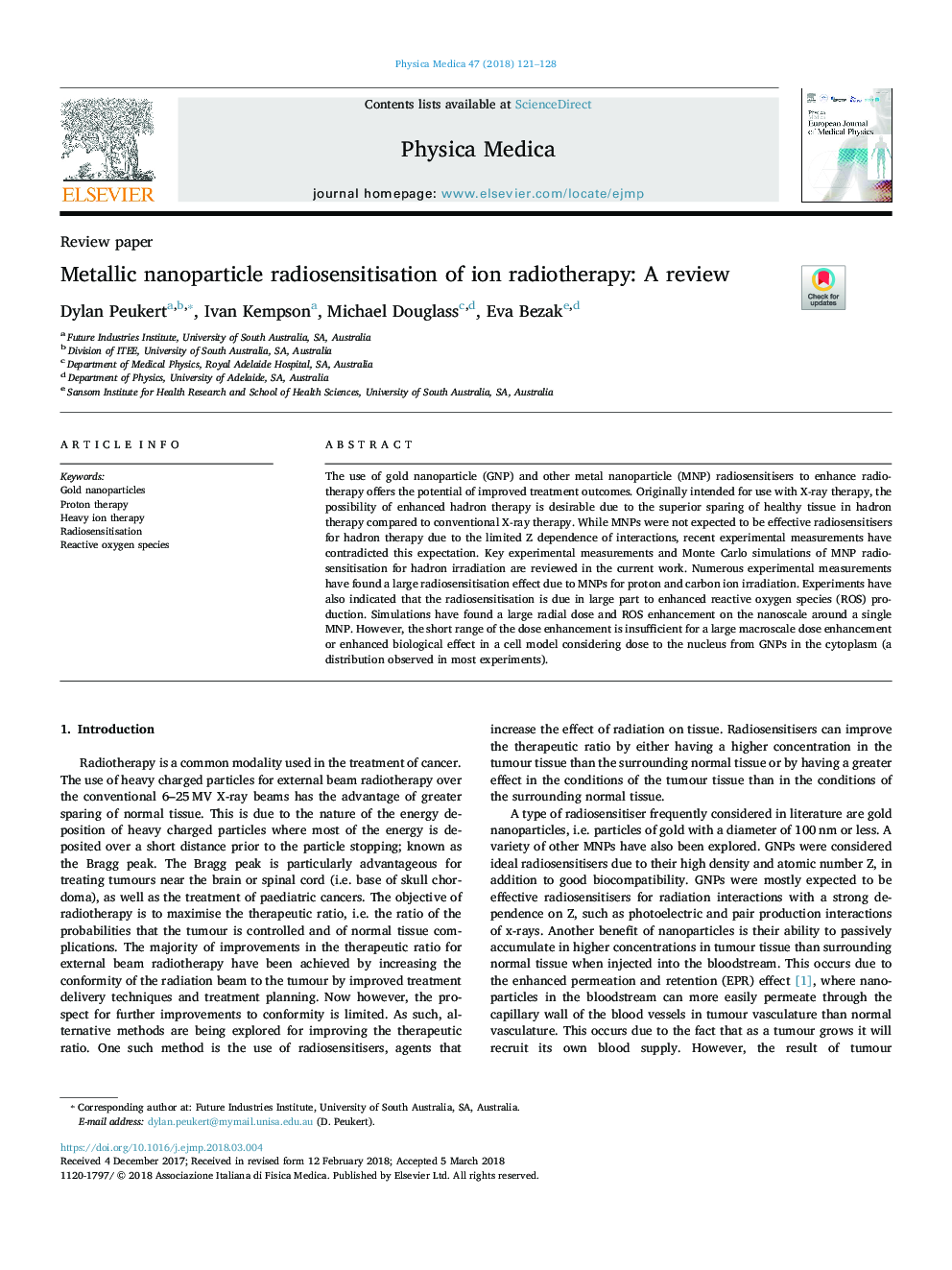| Article ID | Journal | Published Year | Pages | File Type |
|---|---|---|---|---|
| 8248776 | Physica Medica | 2018 | 8 Pages |
Abstract
The use of gold nanoparticle (GNP) and other metal nanoparticle (MNP) radiosensitisers to enhance radiotherapy offers the potential of improved treatment outcomes. Originally intended for use with X-ray therapy, the possibility of enhanced hadron therapy is desirable due to the superior sparing of healthy tissue in hadron therapy compared to conventional X-ray therapy. While MNPs were not expected to be effective radiosensitisers for hadron therapy due to the limited Z dependence of interactions, recent experimental measurements have contradicted this expectation. Key experimental measurements and Monte Carlo simulations of MNP radiosensitisation for hadron irradiation are reviewed in the current work. Numerous experimental measurements have found a large radiosensitisation effect due to MNPs for proton and carbon ion irradiation. Experiments have also indicated that the radiosensitisation is due in large part to enhanced reactive oxygen species (ROS) production. Simulations have found a large radial dose and ROS enhancement on the nanoscale around a single MNP. However, the short range of the dose enhancement is insufficient for a large macroscale dose enhancement or enhanced biological effect in a cell model considering dose to the nucleus from GNPs in the cytoplasm (a distribution observed in most experiments).
Related Topics
Physical Sciences and Engineering
Physics and Astronomy
Radiation
Authors
Dylan Peukert, Ivan Kempson, Michael Douglass, Eva Bezak,
